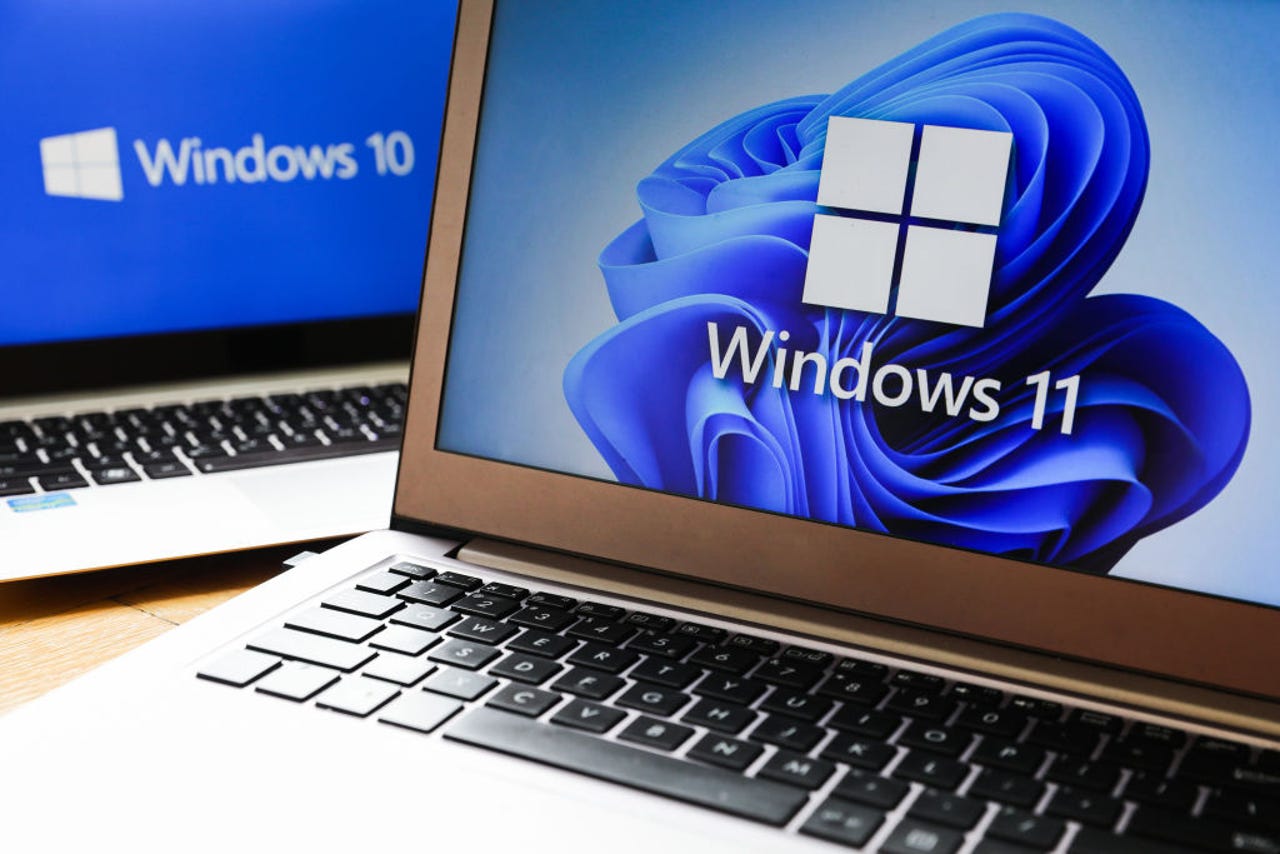'ZDNET Recommends': What exactly does it mean?
ZDNET's recommendations are based on many hours of testing, research, and comparison shopping. We gather data from the best available sources, including vendor and retailer listings as well as other relevant and independent reviews sites. And we pore over customer reviews to find out what matters to real people who already own and use the products and services we’re assessing.
When you click through from our site to a retailer and buy a product or service, we may earn affiliate commissions. This helps support our work, but does not affect what we cover or how, and it does not affect the price you pay. Neither ZDNET nor the author are compensated for these independent reviews. Indeed, we follow strict guidelines that ensure our editorial content is never influenced by advertisers.
ZDNET's editorial team writes on behalf of you, our reader. Our goal is to deliver the most accurate information and the most knowledgeable advice possible in order to help you make smarter buying decisions on tech gear and a wide array of products and services. Our editors thoroughly review and fact-check every article to ensure that our content meets the highest standards. If we have made an error or published misleading information, we will correct or clarify the article. If you see inaccuracies in our content, please report the mistake via this form.
How to screen record in Windows 10 or 11


I sometimes need to record screen activity in Windows for a tutorial or demonstration or online class. Whether you're creating a presentation, devising a how-to video, or cooking up something for YouTube, you might want to record your screen activity in Windows as well.
Also: The best Windows laptops you can buy right now
A variety of third-party tools can handle that job -- some free and some paid. But rather than download and install an external program, you can take advantage of a couple of features built directly into Windows.
Available in Windows 10 and 11, the Xbox Game Bar video-capture tool is designed to record gameplay on your PC. But it's a versatile tool that will capture just about any other type of screen activity.
With Xbox Game Bar, you can easily record your screen, turn on the microphone to grab your voice or other audio, and save the recording to your PC. You can then manage all the recorded clips within the Game Bar interface and play any video. The video itself is saved as an MP4 file, so you can modify or spruce it up using any video editor. I'll show you this process in detail below.
Also: 7 ways to make Windows 11 less annoying
But there's another option, at least if you use Windows 11. Once a simple screen-capture utility, the Snipping Tool can record any screen activity and save the recording as an MP4 video file. Let's check out both options.
How to record any screen activity in Windows with Xbox Game Bar
1. Go to the settings for Gaming
In Windows 10 or 11, go to Settings > Gaming > Captures. The screens look different between Windows 10 and 11, but the settings are all the same.
By default, your screen recordings are saved in your user folder under Videos\Captures, but you can change the location if you wish.
2. Set the duration for background recording
Next, you can opt to record activity that has already occurred. In Windows 10, turn on the switch for "Record in the background while I'm playing a game." In Windows 11, turn on the switch for "Record what happened." You can then determine the duration for background recording. Click the dropdown menu for "Record the last" to set the time to anywhere from 15 seconds to 10 minutes.
3. Enable your recording options
Next, check the boxes for "Record even when my PC isn't plugged in" and "Record while wirelessly projecting my screen" to enable both options.
Also: How to send and receive iMessages on Windows
Click the dropdown menu for "Max recording length" to set it to 30 minutes, 1 hour, 2 hours, or 4 hours.
4. Enable and control audio capture during screen recording
Turn on the switch for "Record audio when I record a game" or "Capture audio when recording a game." You're then able to set the quality of the audio, the recording volume for your microphone, and the volume for your PC.
5. Set frame rate and turn off Capture mouse cursor when recording a game
The recommended frame rate is 30 frames per second. You can bump that up to 60fps, but 30fps should suffice for most recordings. The default video quality is set to standard, though you can change that to high if necessary. Finally, you can turn off the switch for "Capture mouse cursor when recording a game" if you don't typically record the mouse cursor.
5. Control keyboard shortcuts
Several keyboard shortcuts are available to control the Xbox Game Bar. In Windows 10, you can view and even change the shortcuts in the Settings screen. For this, go to Settings > Gaming > Xbox Game Bar.
Also: Want to keep getting Windows 10 updates next year? Here's what it will cost
In Windows 11, you have to open the Game Bar interface to view and modify the shortcuts. The following shortcuts are ones you'll want to keep in mind:
- Windows key+G: Open Xbox Game Bar.
- Windows key+Alt+R: Start or stop recording.
- Windows key+ Alt+G: Record the last 30 seconds of screen activity.
- Windows key+Alt+B: Turn HDR on or off.
- Windows key+Alt+PrtScn: Take a static screenshot of your screen activity.
How to run the Game Bar
1. Set up the activity you want to record
Now, let's display the Game Bar and activate it to record your screen activity. Set up the activity you wish to record. When ready, press Windows key+G. The top toolbar and the Capture pane for Game Bar should appear.
Also: What is an AI PC? (And should you buy one?)
The top toolbar lets you show or hide the different menus and panes for Game Bar, including Widget, Audio, Capture, Performance, Resources, and Xbox Social. At a minimum, you'll want to see the Capture pane so you can start, control, and stop the capture.
2. Start a recording
Tap the Record button in the Capture pane. Then perform the screen activity you want to capture. A small recording panel appears on the screen.
3. Stop and view your recording
When you've completed the activity being captured, press the stop button on the small panel to stop the recording. A message pops up telling you that the game clip was recorded.
Click that message or press Windows key+G to return to the Game Bar interface. A Gallery window appears with the name, date, and time of the recording, and the video available for playback. Tap the Play button in the viewer.
Also: Is Windows Update annoying you? Take back control in 3 easy steps
From there you can pause the video and raise or lower the volume.
4. How to record without launching Game Bar
First, press Windows key+Alt+R. The small recording panel appears on the screen. Click the stop button when finished and then open Game Bar. Your new recording now appears in the Gallery window for you to play. If you need to capture the last 30 seconds of screen activity, press Windows key+ Alt+G.
5. How to work with recorded video directly
Go to c:\users\[username]\Videos\Captures. You'll see your videos saved as MP4 files, which you can open in a video editor or other application to play or modify them.
6. How to tweak Game Bar settings
Press Windows key+G. On the top toolbar, click the Settings icon. Here, you can view and change any of the shortcut keys, modify the visual theme of the Game Bar interface and the transparency of the menus and panes, and control how and when audio is recording as you capture your screen activity.
How to record your screen in Windows 11 with the Snipping Tool
1. Check your OS version
To record your screen in Windows 11 with the Snipping Tool, you'll need a certain build for the operating system. To check, go to Settings > System > About. In the Windows specifications section, the build should be 22621.1344 or higher.
Also: 11 Windows touchpad tricks to help you work faster and smarter
If you qualify, you're good to go. If not, head to Windows Update to snag the latest updates for the OS and then to the Microsoft Store and your library to grab the latest updates for your Store apps.
2. Set up the window or app you want to record
Click the Start button, go to All Apps, and then click the shortcut for Snipping Tool. Click the Camera icon on the toolbar and then select the New button.
3. Focus on the right area
Select the area you want to record and then click Start on the Snipping Tool toolbar.
4. Perform the activity
After the recording starts, perform the screen activity you want to capture. Click the Pause button on the toolbar to take a break and then click the Record button to restart. When done, click the Stop button.
5. Edit, share, or save the file
The recording automatically starts playing in a Snipping Tool preview window. From there, click the Edit in Clipchamp icon to edit the video. Click the Share icon to share the file with a person or app. Click the Save button to save the recording as an MP4 video file.
6. Set your preferred audio recording source
With the latest update to the Snipping Tool, you can now configure your audio settings before you start your screen recording. To do this in the Snipping Tool, click the ellipsis icon in the upper right and select Settings. Scroll down the screen to the section for Screen recording.
Also: The best laptop docking stations: Expert tested and reviewed
To automatically start recording audio through your microphone, turn on the switch for Include microphone input by default when a screen recording starts. To automatically start recording your PC's system audio, turn on the switch for Include system audio by default when a screen recording starts.
During the actual screen recording, you can also opt to mute the audio from the microphone or from the system.